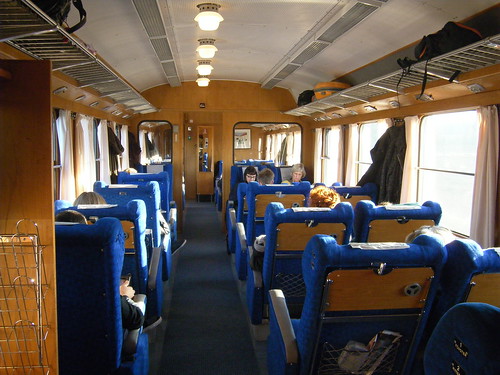The launch of London-Frankfurt high-speed services has been pushed back due to Siemens’ delay in supplying 16 ICE 3 trains to Deutsche Bahn, who ordered the trains in 2008 and were promised delivery last December.
DB originally wanted to run London-Frankfurt trains for the 2012 Olympics, but then pushed the start date back to 2013 – but further delays mean the service will not now be launched until at least 2016.
The delay is reported as being due to software problems discovered during testing.There was a time when the only things running through a train were a pipe for the braking system, and a pipe for the steam heat. Then they added electricity, with a dynamo-battery set under each vehicle and cables from vehicle to vehicle in case of failure. Ventilation systems were passive so didn't break down and door operation was manual with someone on the station platform to check that they were properly shut before the train moved off.
Trains like those are of extreme simplicity, inexpensive to construct and maintain, and are within the capacity of part-time amateurs to keep going. And from the passengers' point of view there has been little improvement - on the contrary, they got a comfortable seat, space, and somewhere for their luggage.
Later on, into the 1970s other features were added which required a cable with a hundred or so connections but that was manageable too. It brought in features such as retention toilets, power operated doors and air conditioning, which are genuinely useful if they work and a menace when they don't. The first is a matter of basic hygiene but the latter two could certainly be regarded as optional extras.
But since then, the complexity has increased exponentially, and so has the cost.
The people specifying railway vehicles need to take a good hard look at what is needed and what is not, and how much could be saved, and how reliability could be improved, by simplification, even if it means employing additional staff to do things which have been automated at vast expense. Or running the trains at lower speeds, because high speeds also give rise to hidden costs, as discussed elsewhere in this blog.


